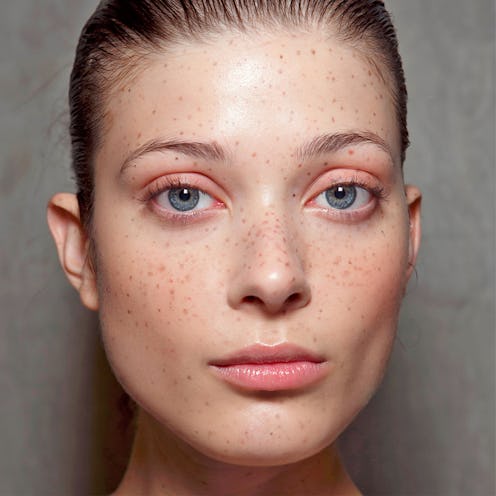One of the most common yet most inconvenient skin conditions is hyperpigmentation. Despite its ubiquitousness among women of all backgrounds and ages, many of us still don’t know what it really is. When examining our faces, plenty of us have small dark spots that stand out against surrounding areas of our skin. Shockingly enough, hyperpigmentation isn’t something that only results from acne. Freckles and sun spots also fall under the umbrella. We spoke to skincare professional Gary Goldfaden, MD, for an explainer on the phenomenon so many people know very little about—and that is usually the result of your skin trying to protect itself from harmful effects of the sun’s powerful UV rays.
As mentioned, there is in fact more than one form of hyperpigmentation that can occur on the skin."Sun spots, melasma, scarring, and post-inflammatory hyper pigmentation are the various types," says Dr. Goldfaden.
"Acne scars can appear dark and be post-inflammatory hyperpigmentation, which is actually temporary," he explained."However, if exposed to the sun then this may become long-term hyperpigmentation. A general rule of thumb is if the acne mark or lesion is still visible after 6-12 months, then it is considered a scar," he added.
"Freckles fall under the umbrella of hyperpigmentation. Sun exposure has a lot to do with the darkness and severity, but sun exposure activates melanin and your freckles will get darker," he explained.
"Hyperpigmentation occurs when overexposure to sunlight begins to produce melanin," he said. "Specialized cells move upwards towards your skin's surface, causing dark spots. Hormones, such as birth control pills can also cause this and sunlight can also increase the severity," he added.
"Darker skin tones are more prone. All skin generally distributes the same amount of melanin. However, the difference in lighter skin and darker skin is the size. Darker skin has larger melanosomes, hence more susceptible to hyperpigmentation," he explained.
"Post-inflammatory hyperpigmentation is usually temporary and can be caused by inflammatory acne, a severe burn or injury to the skin. While anyone can suffer from this, it is more common in dark skin types," she said.
'To prevent it, you should be wearing an SPF at all times when exposed to the sun," he said. "Exfoliation can also help the appearance of spots as it removes dead, dry, dark skin cells from the surface of the skin. In office micro-dermabrasion treatments and laser treatments can help diminish the appearance," he added.
For those who already have it, Dr. Goldfaden says it is reversible but it's no easy task. "Itakes a lot of diligence. Even laser treatments are not always 100% successful and the dark spot can possibly return."
"To treat existing spots wear SPF at all times, and sun protective gear when necessary. Exfoliation is also important, and incorporate an active treatment serum into your skincare routine," he explained. "Fraxel laser is one of the most popular in-office treatments, along with Micro-Dermabrasion. In-office chemical peels can be very effective as well, particularly glycolic and lactic acid peels," he suggested.
According to Dr. Goldfaden, three key ingredients you should always look for in skincare products when concerned about hyperpiguentaion are, Vitamin C, lactic acid, and glycolic acid. Lactic and glycolic acids are the most popular alpha hydroxy acids (AHA's) available in skincare, due to their abilities to deeply penetrate the skin and help prevent breakouts and signs of aging. Vitamin C naturally has skin brightening complexes, due to its role as an antioxidant.
